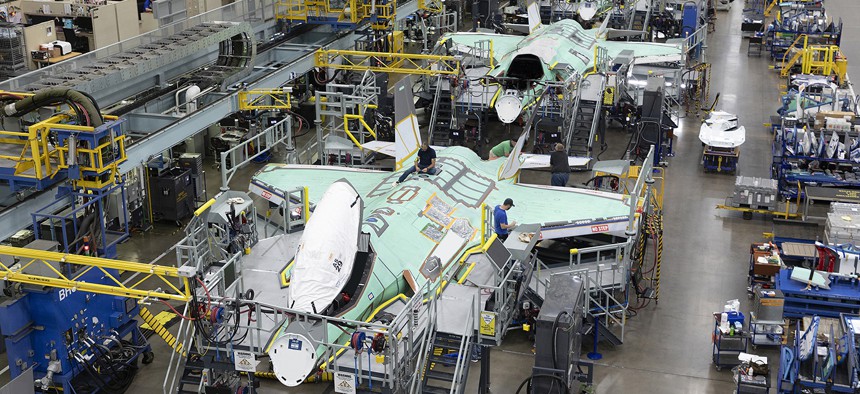Software problems will cut F-35 deliveries this year, Lockheed says
The delays will cost the company about $7 million per jet.
Lockheed Martin said it would deliver as many as 53 fewer F-35s to the U.S. military and its allies this year as it struggles to certify the software that comes preloaded on new jets.
The company now expects to deliver between 100 to 120 F-35s this calendar year, down from the planned 147 to 153, CEO Jim Taiclet said on Lockheed’s quarterly earnings call on Tuesday.
Lockheed delivered 50 F-35s in the first six months of 2023, Taiclet said. Those planes all had software known as Technology Refresh 2. Subsequent aircraft include new hardware and software—Technology Refresh 3, or TR-3—which will bring 20 to 25 times more computing power, plus more memory and a new panoramic cockpit display. But the company has been unable to get the new system working reliably, and in June, the Pentagon stopped accepting the jets.
The Pentagon will not resume accepting the jets until they can reliably run at least the current TR-2 software, a spokesman for the F-35 joint program office said last week.
On the call, Taiclet attributed the reduced deliveries to “software maturation, acceptance and certification related to the…TR-3 configuration and hardware delivery timing.”
“Our team remains fully dedicated to delivering the first TR-3 aircraft in 2023,” he said.
Each plane Lockheed cannot deliver this year will reduce 2023 revenues by about $7 million, though that money will come through once the planes are delivered, CFO Jay Malave said on the earnings call.
In April, Lockheed executives predicted that software problems would shrink 2023 F-35s deliveries, but they did not say how many fewer would be delivered.
On Tuesday, Taiclet said the company still plans to deliver 156 aircraft in 2025 and into the future.
“The supply chain and production system continues to execute at a rate to support these future year delivery targets,” he said.
Getting deliveries back on track remains the focus for executives.
“We and our suppliers are applying all the needed resources to this. It's a top priority for our company and a few others as well,” Taiclet said. “We're running extra shifts. And we're deploying subject matter experts into other companies [at] our suppliers operations to make sure this stays on track.”
Despite delivering fewer planes, the company still continues to build planes even if it can’t deliver them.
“The whole production system, especially the long-lead-time parts, are tracking through the supply chain,” Taiclet said.





